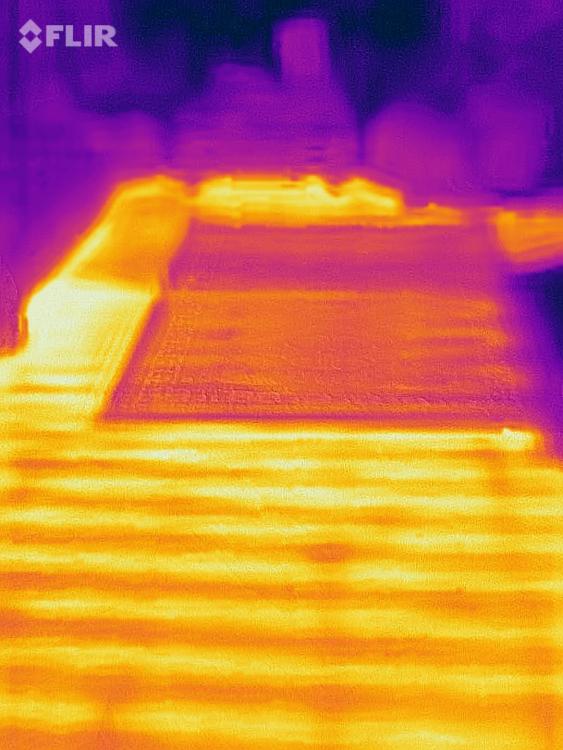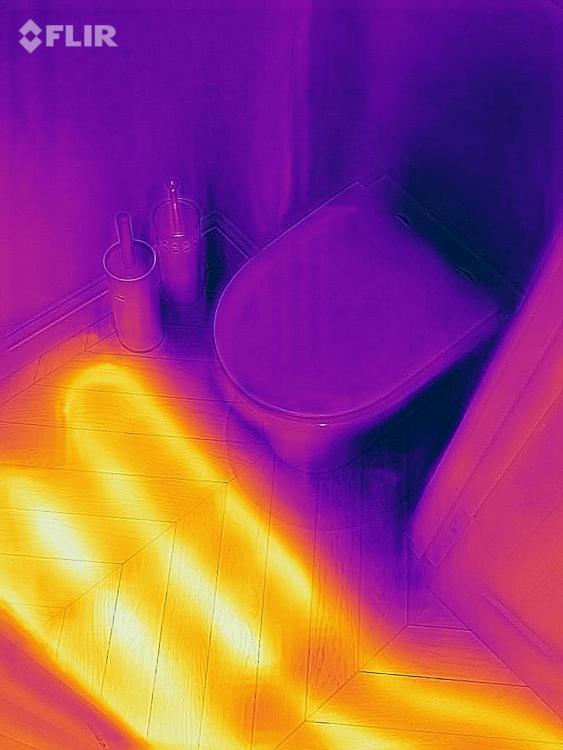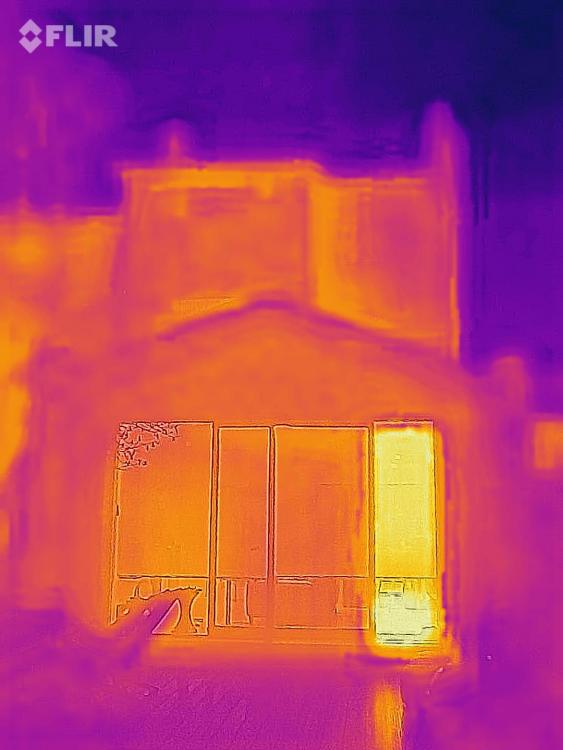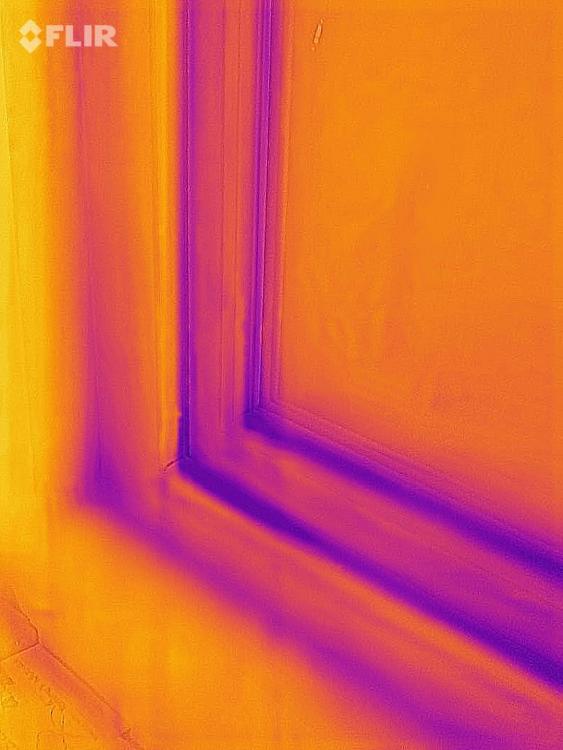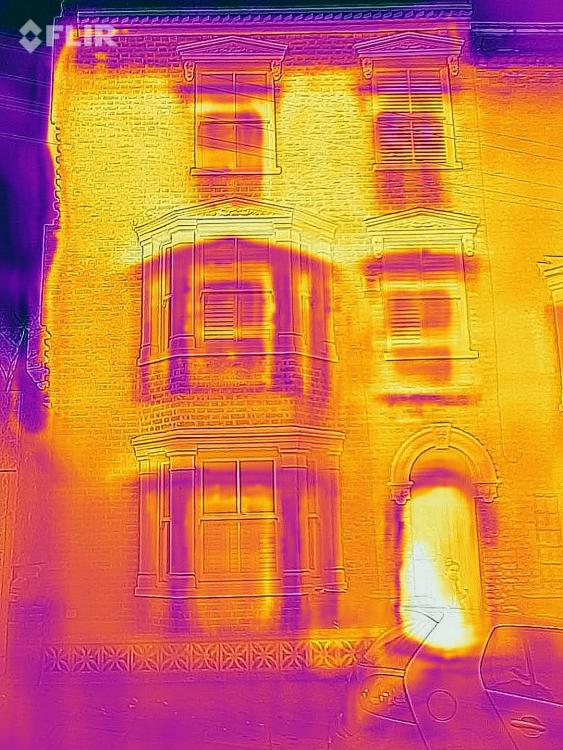
jayroc2k
Members-
Posts
61 -
Joined
-
Last visited
Personal Information
-
Location
UK
Recent Profile Visitors
The recent visitors block is disabled and is not being shown to other users.
jayroc2k's Achievements

Member (3/5)
12
Reputation
-
Confused by Triple Glazing Justification
jayroc2k replied to MortarThePoint's topic in Windows & Glazing
Adding a different perspective, whatever the glass is surrounded by is actually more important than the number of panes. metal frame with poor thermal breaks are the worst. I have 3 examples installed at home. all double glaze examples. 1. new 'sealed' sash Windows - this is the worst, its draughty around the edges, the seal is very difficult to get right as the panes still needs to slide 2. metal double glaze conventional window, this is the second worst, you feel the air movement from the cold metal 'convection' 3. wood frame large sliding door with great seal due to the 'lift and slide' mechanism. the best of the bunch here by a country mile. pay more attention to the thermal breaks, seals. then pick 2G or 3G. -
Install Dekton / Neolith ceramic if you want that's look. I installed the 12mm white 'zenith' Dekton because of the sharp 12mm look, a mug fell from the top cabinet and cracked the work top, getting that replaced via home insurance but the £400 excess stings. I would install the 20mm next time. I can't replace the 12mm with 20mm as all sight lines follow the 12mm profile, it would cost too much, its cheaper to move all plates and glasses to a lower drawer
-
You may already know this but here are some basic principles of mortgages. - secured against a house, however, most lender support “cash out” mortgages. Meaning the cash is paid to you and not to another mortgage. That’s how many people fund businesses or buy second homes etc. I took out almost some cash and gave a flimsy reason (I just took the cash as thought I may need some money and was facing redundancy). HSBC said it was for their records of what typical cash out are used for. She was more disappointed I was not doing anything interesting like renovating, getting married or buying a new car. - your dad is ultimately responsible for you defaulting, the bank just see his house with equity. He has equity, but the bank will fund ONLY to his retirement age. Equity cash out for pensioners are very expensive and ill advised unless you know what you are doing (reduce inheritance tax etc) - once built, you can borrow against your property for the same reasons as in point 1 Then there is the big BUT. - Banks with manual underwriting process may take a view and refuse to lend if they don’t like the reasons. - if we hit a lending crises at the time of your house being completed. Banks can tighten lending - also, if you fall ill, or are out of work, you can’t borrow to repay 60% mortgages are under 1.6% for 2yrs. Self build are 5-6% and only on the drawn amount. You may find the real rate to be circa 3-4% once you are fully drawn 18mths down the line vs a fully drawn mortgage via your dad on day 1 If you wanted to be really cold, you could raise the point of asking your parent to advance you your inheritance via an equity release/mortgage option. Then your will need a proper tax lawyer to advise I am just a guy off the internet.
-
Interpretation of thermal images
jayroc2k replied to jayroc2k's topic in Energy Efficient & Sustainable Design Concepts
Yes. New it’s a photo of the new timber sash that have intergrated brushes. The seal is not as good as I expected but the bathroom window that is a new “thermally broken” aluminium double glaze window by a uk company is tremendously worse. That aluminium window made me realise that it’s really best to stick with recommended brands on this site. Renovation now over so can’t do anything beyond draught proofing. House is warmer than neighbours but not as warm as a barrat homes new build. Added photos aluminium double glaze window (claimed it’s thermally broken - doubt it) Old school plasma tv hanging on 40mm insulation Plasterboard (blue bit under is where insulation was removed to feed cabl) Effect of a rug on ufh timber floor -
Interpretation of thermal images
jayroc2k replied to jayroc2k's topic in Energy Efficient & Sustainable Design Concepts
Agree. It’s at worst hugely fun, and it can be quite revealing in knowledgeable hands. If you are with Octopus the energy company, it’s free to use for a week. Expensive to rent otherwise. There are Chinese copies on eBay. But from my limited experience, it’s only as good as ther software it runs. -
I have been loaned a Flir One Thermal imaging camera by the energy company. I took several photos but struggling to make heads or tails of it. Its a Victorian house with mixed levels of insulation but all new timber sash double glaze windows. Some rooms have full internal insulation with insulated plasterboards while, others are plain old solid brick house feels draughty but the thermal images are not telling me anything I don’t know some attached to help interpret. Thanks so far draughts are from - front door (key hole, surrounds etc) - skirting (feels bad) - electric points in plasterboard
-
My victorian house has one section with plasterboard and the second with original lathe and plaster (same reception with two rooms above). I have to say, 2 plasterboards ( I used the heavy fire board version) is still no match compared to the lathe and plaster.That should give some perspective as to how poor plasterboard is at sound insulating/deadening, hence the need to decouple and use 2x sound bloc for now, I don't mind, i like to hear what my kid is up to, I may change my mind when she start playing whatever the futuristic version of teen pop is in 10years time. Hopefully, there will be a "Sound Bloc in a can" spray i can buy and just spray the ceiling...
- 18 comments
-
- insulation
- sound insulation
-
(and 1 more)
Tagged with:
-
if you are doing the ceiling for sound insulation, from my experience, sound will always travel via gaps and holes. if you have spot lights, should will travel. Also, i noticed the rock wool can't get into the space with the metal easi-joists. Sound will travel. however, you have enough to at least deaden/dampen the sound (echoes etc). I was very diligent with the bathroom above the living room but did not put rock wool in some section under the shower tray due to the pipes, you can hear the shower. just a opinion.
- 18 comments
-
- insulation
- sound insulation
-
(and 1 more)
Tagged with:
-
Unusual P2P case
jayroc2k replied to Jeremy Harris's topic in P2P lending, Crowd Funding and Alternate Sources
This is an old thread, but one option would be to consider the stair casing model used by shared ownership. You sell a percentage under 80% on day 1, stamp can be elected to be paid on day 1 or on the day the ownership exceeds 80%, this solved the stamp duty payment date. However, the stamp will be paid at the future stamp rate as you are not locking in today's stamp duty rate. Also, the stamp will be on the future value, although I won't worry about that too much, unless you think house prices are going up meaningfully. You can stair case many times which means the seller can still retain some ownership if the buyer gets into difficulty (illness or death). On a separate note, I have lent large sums to friends in the past and refused to lend to others based on a few simple questions i honestly ask myelf 1. is this a need or a want 2. can the person tighten their belts when things are tight financially 3. will the person subordinate payments to me because they need to upgrade their car (or similar non priority purchases) 4. if the above are satisfactory, I then ask myself, if they are ill or made redundant, will I be happy for an almost indefinite deferral of payment. This is where people get bitter and fall apart, if you make a friend/family repay a loan when they are in hardship then prepare for a fallout. 5. never lend your survival fund If borrower fall ill, lending institutions have legal means to collect the debt, the borrowers also have legals protections via insolvencies and bankruptcies, the system works. -
Hi Everyone - retrofit (wet) UFH advice required
jayroc2k replied to Matt1976's topic in Introduce Yourself
i installed the wet system by polypipe which is 12mm pipe in gloved 18mm polystyrene board in a victorian house which worked well..however, there was a neighbour downstairs, upstairs and to one side. In total, there were three heated sides (floor, ceiling, one wall), the flat itself was single glazed and uninsulated front and rear walls. My observations - the pipe heat up the floorboards which heated the flat quickly due to non-screed and direct contact of the pipe to the floorboards, however, the flat cooled down within 2hours once the heating was turned off. Most important observation was floor surface area heated, the flat was 38sq meter open plan and had UFH throughout, if it had been installed in a typical 4m x 4m room, the heat would NOT have been adequate. i currently have a similar system in my current house, this time i have screed on top of the pipes and 100mm of Polysterene between the joists, the open floor space is 65sq of open plan and end of terrace house. The same applies here too, heat is enough but more down to open space heated to make up for high heat loss. if you have small living spaces, i will definitely say, it won't work, you need a well insulated place. if you have good open spaces, it may just be enough, proceed with caution,it will be a expensive experiment if you don't do the due diligence in advance hope that helps -
You are right. The building control guy said it was like for like and was pleased it was an upgrade. Said the old house would be draughty so trickle vent is an over kill.
-
Thanks for the useful ideas. Any ideas of replacement draught vents for the bathroom extractor fans that actually work. i found this https://www.cheshiredesigncentre.co.uk/anti-draught-air-vent.html I also need an equivalent for the chimney Cap. What I find interesting is that in a friends well sealed apartment, when one window is fully open on one side of the apartment while all the windows are closed, there is no draught, in fact they need to open windows on both aspects to get wind going through. I don’t have trickle vents but I suspect the brand-new timber sash windows are not as air tight as I expected
-
Having just completed a whole house renovation and reused all of the old doors, however all the windows are brand-new, however the house still seems very draughty. I am trying to find a way to find where the drafts are coming from, I have tried using flames which does not work or an incense stick but both are quite tedious and not very effective. Any ideas how to trace tiny/big drafts around the house. Another annoyance is the flappy exterior drafts vent on the bathroom extractors keeps “slapping” as the wind causes it to constantly flaps noisily. Any ideas for replacing it. The actual unit also has its own flaps which is constantly doing the same, noisily flapping constantly. It is this one and has a flap inside https://www.screwfix.com/p/manrose-cowl-vent-white-100-x-100mm/16195 I suspect drafts are coming from - extractor vents - chimney - kitchen extractors which is ducted upwards via the vertical chimney (I can hear the air blowing in) - skirting boards. - two air bricks - small cracks around the stairs above the vented cellar I am tempted to pay for an air test but surely I can do most of the investigation DIY. It’s a Victorian house renovated completely. i need a ways to test and find the big leaks. Thanks P.S. Draft should have been draught!
-
It’s been over a year since we competed the whole house renovation and now my power tools sit unused in the basement, I lost my mojo to complete the last few tasks like shelves etc even though I bought the tools to “save money”. They are all Titan or wickes brands and therefore no resale value. Just keeping them like trophy heads of hunted deers! Or does one’s DIY mojo return years down the line? i have over 10 power tools from track saws to routers. I guess I can become a youtuber reviewing Titan tools and become a YouTube millionaire ideas?
-
Based on my experience? Definitely in the floor for bathrooms as you want to be able to “force” the heating on to warm the tiles regardless of the actual temp in the space. I am having to set mine at almost 25deg just to get the floors to warm up.



